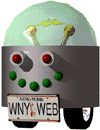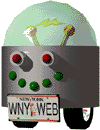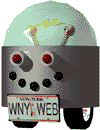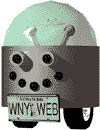

Speed is Everything
The speed at which the world connects to the Internet is increasing. People are buying faster modems, getting ISDN lines or cable modems, and running T3 lines to their houses. However, this is no excuse to load your pages with huge graphics. The larger the file size of an image, the longer it takes to download.
People WILL get frustrated with huge pages and they WILL click their "Stop" button and go somewhere else. This is probably not what you want.
It is very important to minimize the time it takes your page to load. Some things, like your web server or the state of the Internet, you may not be able to change. However, you can take steps to reduce the size of your images.
First, decide if you really need all those graphics. Sure, a picture is worth a thousand words, but it also takes longer to download.
Second, use your graphics program to reduce the size of the image. For GIF's, you should try reducing the color depth. For JPEG's, try changing the compression ratio.
Reducing a GIF's Color Depth
We mentioned previously that the GIF has a maximum of 256 colors. This is known as "8-bit" color. If you ever took any computer science, you know that 8 bits can store 2^8, or 256, values.
You can also specify a smaller number of colors to use in a GIF. The fewer the colors, the smaller the GIF! Keep trying different color depths until you're happy with both the quality and the file size.
'Bot is shown below in a number of different depths, as well as the resulting file sizes.
8 bit (256 color)

19k |
7 bit (128 color)

17k |
6 bit (64 color)

14k |
5 bit (32 color)

12k |
4 bit (16 color)

9k |
3 bit (8 color)

8k |
Increasing a JPEG's Compression
Your graphics package hopefully will allow you to change the compression quality of your JPEG files. For example, in Photoshop you can save a JPEG as "Low Quality", "Medium Quality", "High Quality", or "Maximum Quality". In many cases, humans can't tell the difference between a JPEG saved as Low Quality and one saved as Maximum Quality! This is another area in which you'll have to experiment.













